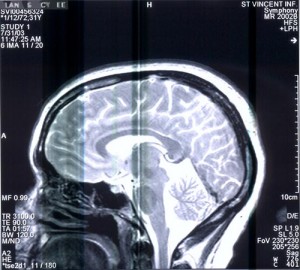 The National Transportation Safety Board (NTSB) reports that 4,400 motorcycle deaths occurred in 2009 alone (1). The number of deaths related to motorcycle accidents has been steadily increasing over the last ten years. From 1997 to 2008, the number of deaths related to motorcycles more than doubled during a time when the overall number of highway deaths declined. The leading cause of death is head injuries.
The National Transportation Safety Board (NTSB) reports that 4,400 motorcycle deaths occurred in 2009 alone (1). The number of deaths related to motorcycle accidents has been steadily increasing over the last ten years. From 1997 to 2008, the number of deaths related to motorcycles more than doubled during a time when the overall number of highway deaths declined. The leading cause of death is head injuries.
In the United States, 20 states have strict requirements that mandate a motorcycle rider is to wear a helmet at all times (2). Most of the other states require helmets only for minors and passengers. Three states – New Hampshire, Illinois, and Iowa – have no helmet requirements at all.
Why Some States Have no Helmet Law
At one time, when states depended on federal highway funding, they all enacted universal helmet laws. As government representatives began to vote against federal funding for state roads, the states no longer kept helmet laws for the sole purpose of securing federal funding. Some states repealed helmet laws and watched the number of deaths quickly increase. In recent years, many states have reenacted helmet laws to combat high rates of brain injury and fatality.
The U.S. Falls Behind
Statistics show that the United States is struggling in terms of reducing traffic fatalities compared to other wealthy countries. Only 2009 saw better numbers with 33,808 fatalities, the lowest rate in 60 years. However, many say the numbers are down only because of poor economic conditions leading to less road traffic.
The United States can no longer call itself “safe” in terms of traffic. From 2005 to 2009, traffic-related fatalities dropped only 19 percent in the United States. France reduced fatalities by 52 percent in that time. The United Kingdom saw a 38 percent decrease. Other countries with safer roads include Australia, Canada, New Zealand, Sweden, Finland, Germany, the Netherlands, and Norway.
These countries use techniques that may be intrusive, but save lives nonetheless. Speed cameras, sobriety checkpoints, speed-measuring devices, and motorcycle helmet laws can all save lives and reduce the number of traumatic brain injuries. Estimates indicate that 1,500 to 3,000 lives could be saved simply by adding to the number of sobriety checkpoints. Speed control devices can save 1,000 to 2,000 lives a year. However, these solutions cost money and resources that are not currently available to most states. Mandatory helmet laws are the most cost-effective solution.
In November 2010, the NTSB added motorcycle helmet laws to its Most Wanted List of Transportation Safety Improvements. Motorcycle fatalities outnumber deaths in aviation, rail, marine, and pipeline categories combined. With increased pressure from the NTSB, limited resources available to local governments and high rates of head injury related death in motorcycle riders, it seems helmet laws are the only currently viable solution left for states looking to reduce motorcycle fatalities.
Contact Us
If you or someone you love sustained a traumatic brain injury in an accident, contact our attorneys. We will provide you with a free consultation and talk to you about your rights.
1 http://www.ntsb.gov/pressrel/2010/101116/
2 http://www.concordmonitor.com/article/224683/safety-officials-push-for-all-states-to-require-helmets


